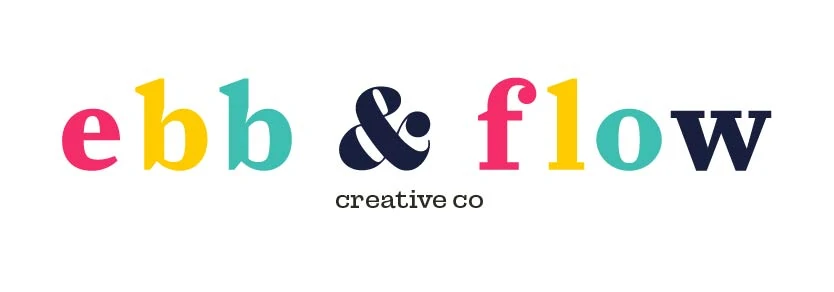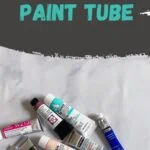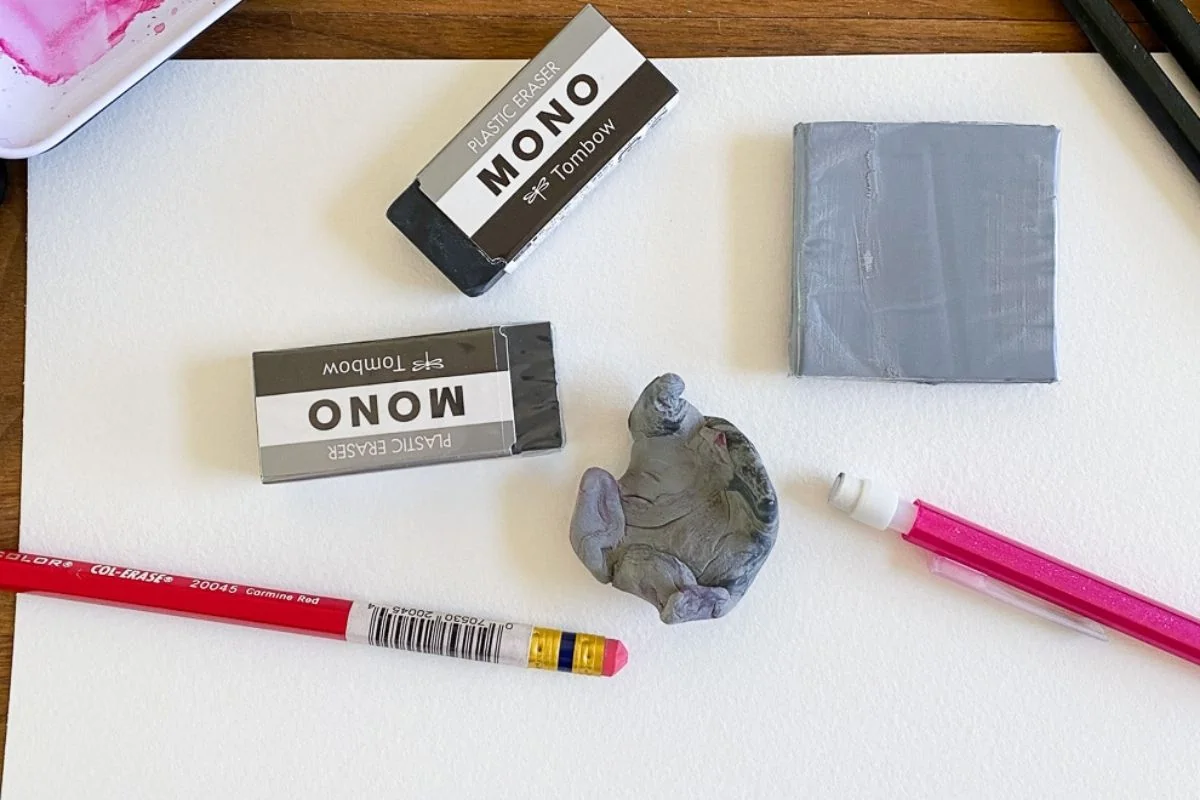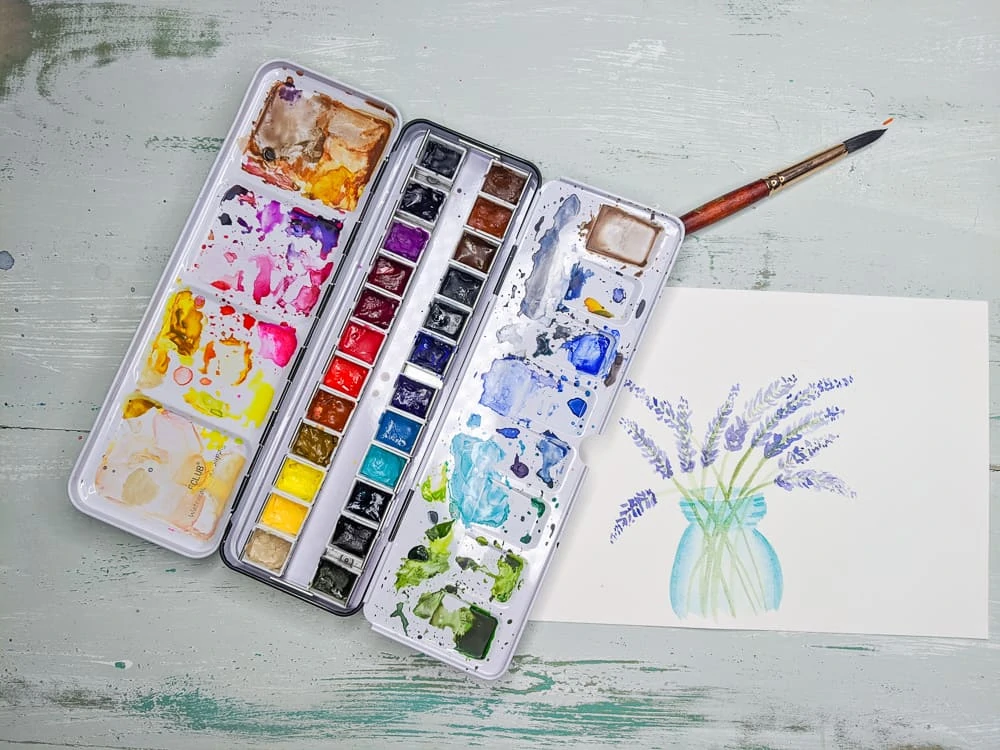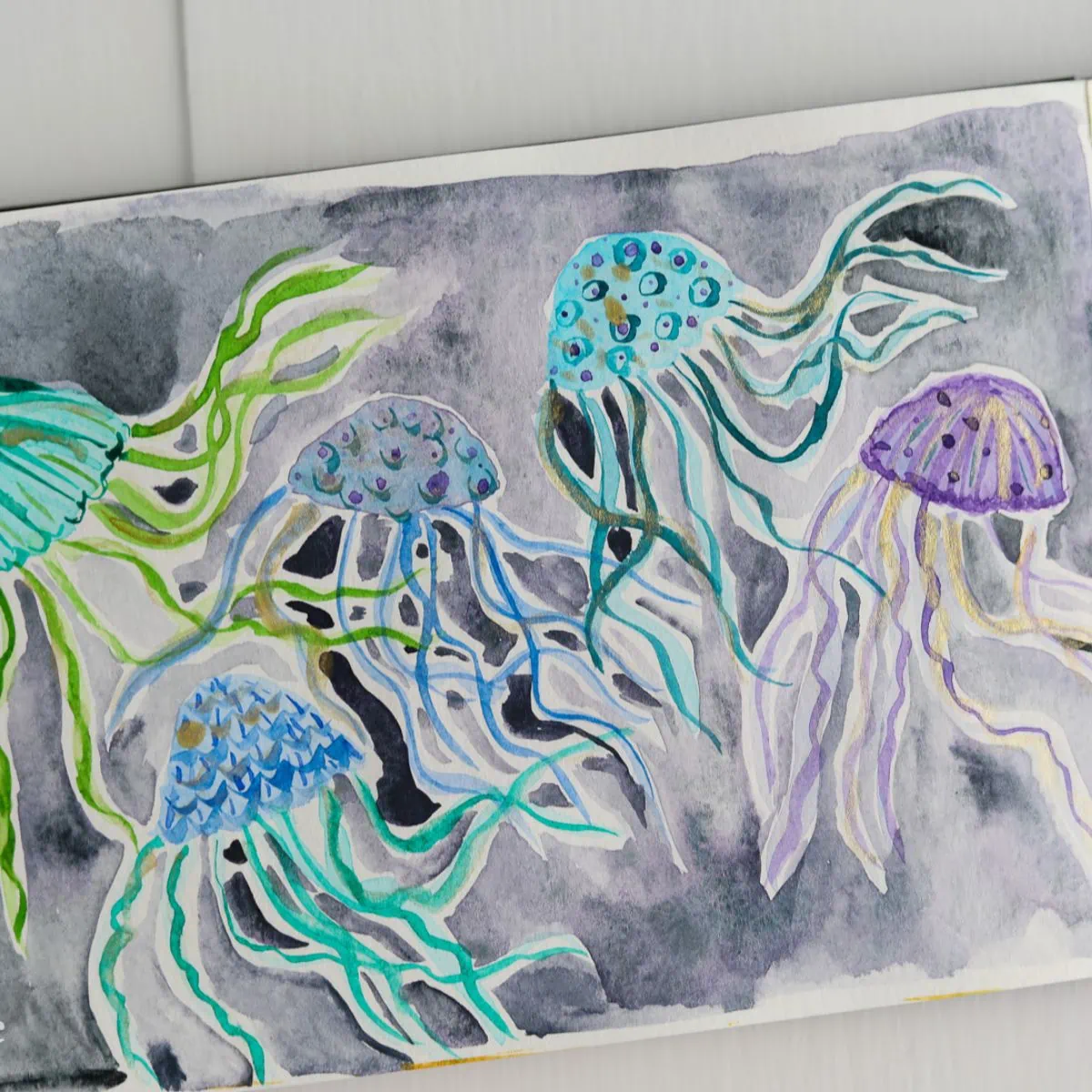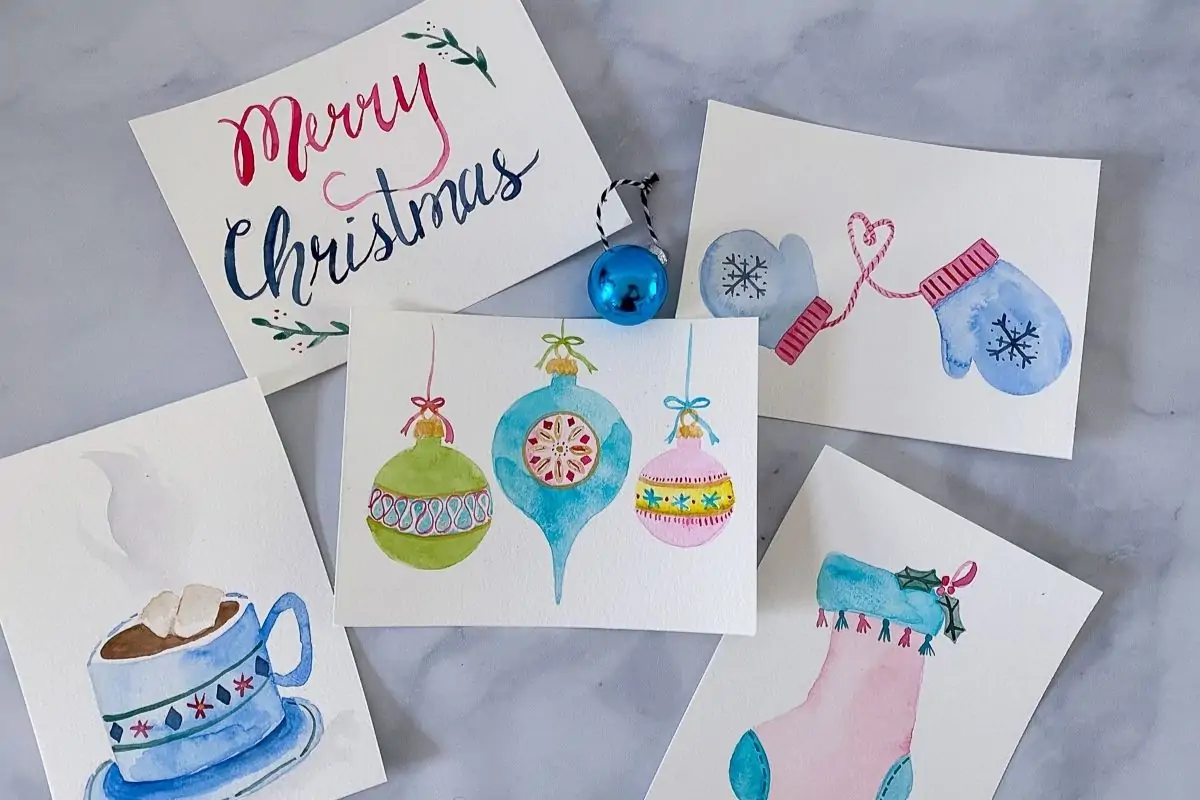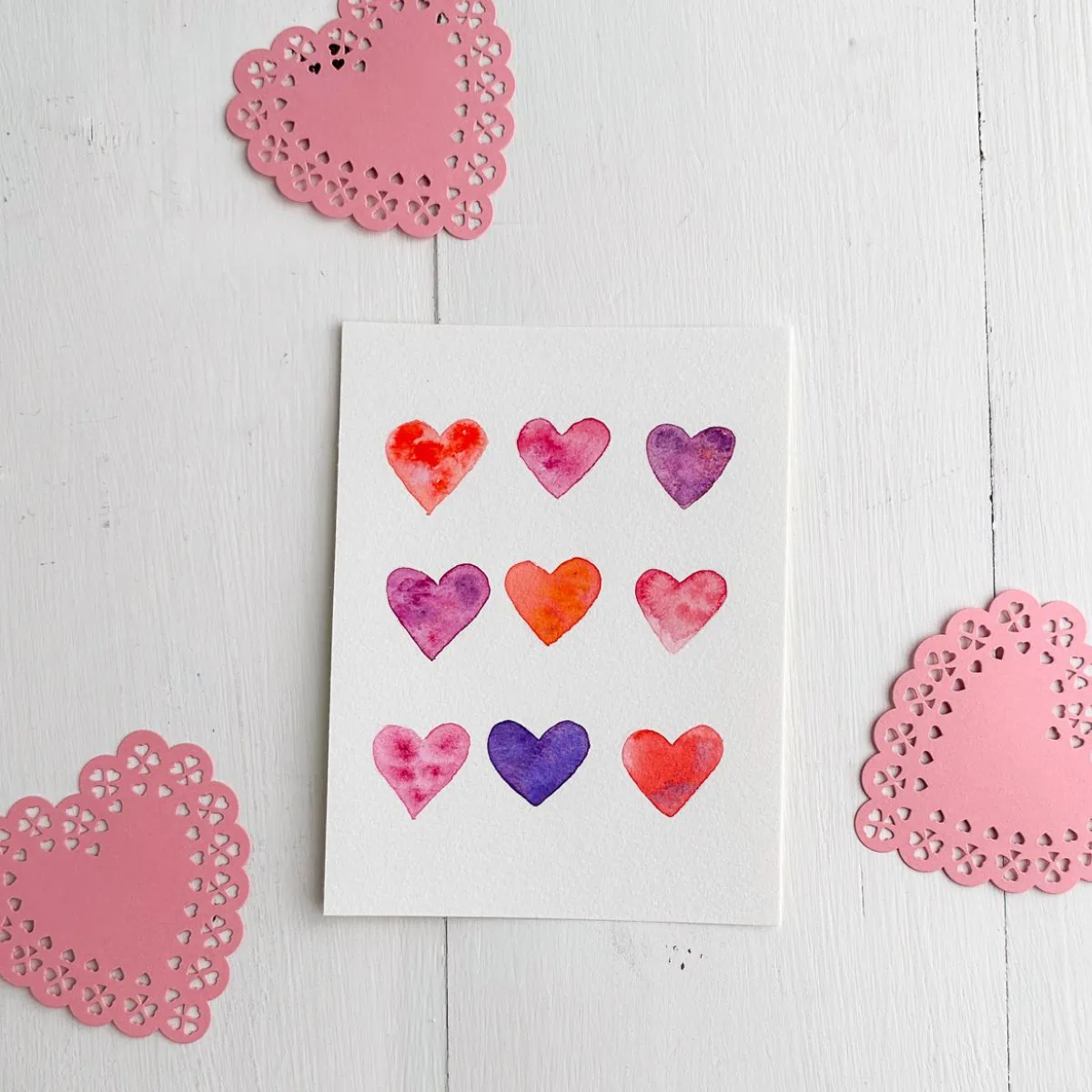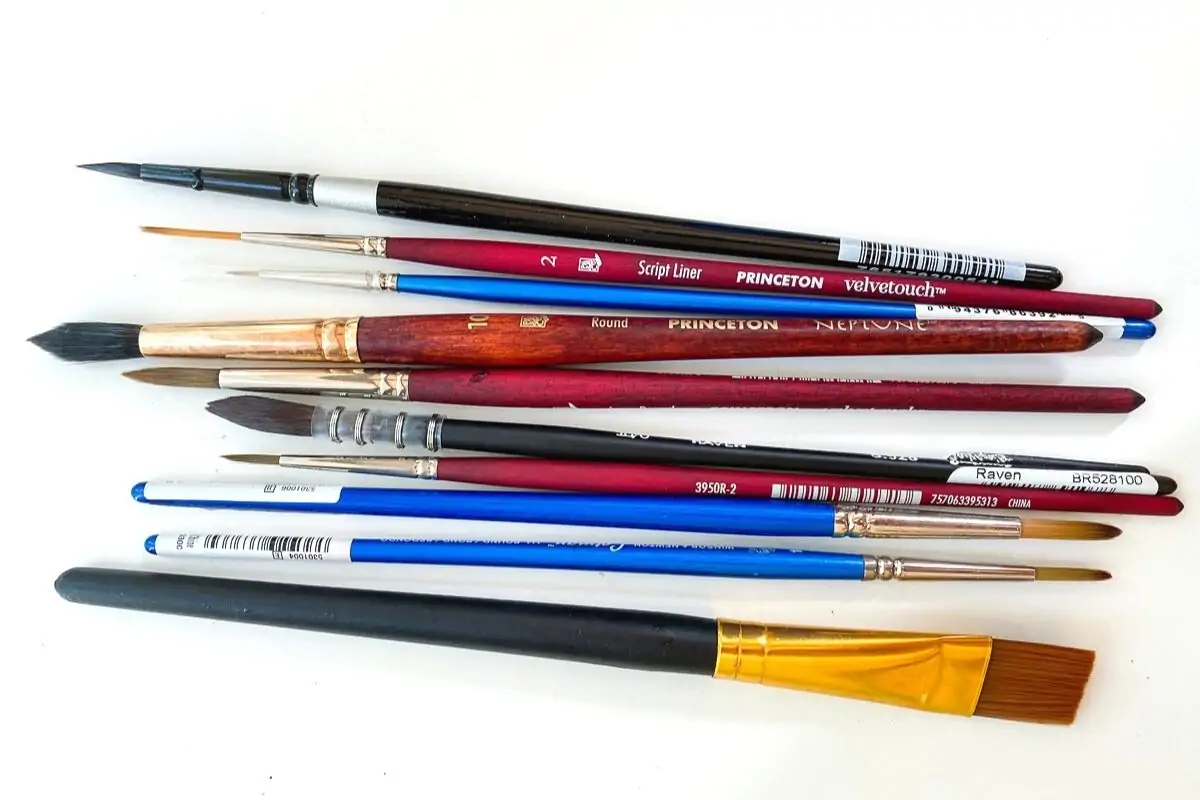How to Read a Paint Tube
If you’re new to painting, you might be confused by all of the information that is on a paint tube. What does everything mean and does it even matter? Learn how to read a paint tube.
You might also like these other watercolor tutorials.
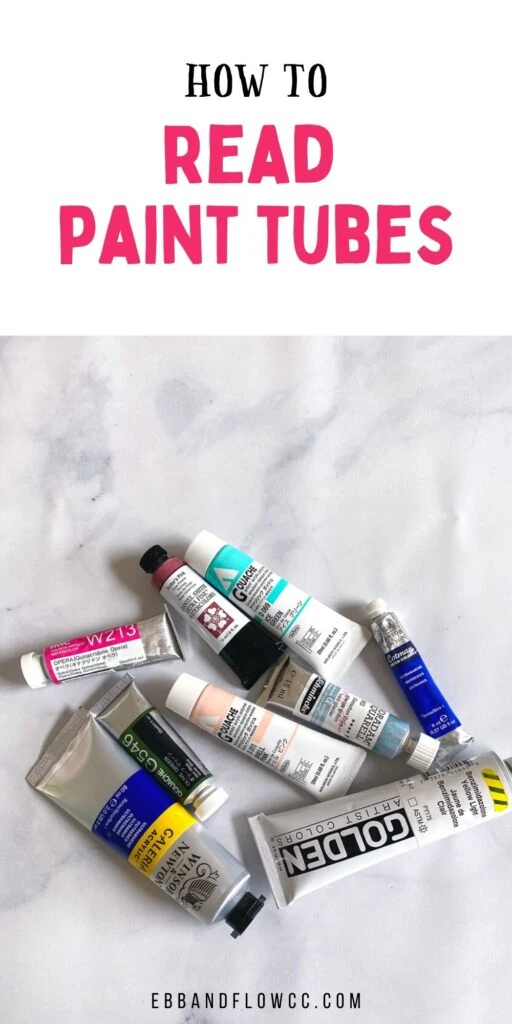
This post contains affiliate links. By purchasing an item through an affiliate link, I earn a small commission at no extra cost to you. As an Amazon Associate I earn from qualifying purchases.
How to Read a Paint Tube
There is a lot of information on a paint tube that can help you decide if the paint is right for you.
Does this information really matter? That depends on a few things.
Are you planning on selling your art or displaying it? If so, it’s really important to know about lightfastness. You don’t want the paintings that you sell to fade in sunlight. Same for if you display it in your own home.
Knowing the opacity can help you determine the right colors for certain situations. In watercolor, you typically want the most transparent colors possible, but some colors are pretty opaque.
With acrylics and gouache, you typically want more opaque paints. Knowing that a paint color is pretty transparent can tell you to add white to make it more opaque. Or that you will need multiple layers.
Knowing the pigment information can help with mixing. If a paint contains multiple pigments, it’s going to produce muddier colors when mixing.
By the way, lower-grade or student-grade paints may not contain most of this information. It’s also an easy way to tell if the paint is student-grade.
Some nicer student-grade paints contain the information though, like this tube of Winsor and Newton’s Cotman paint.
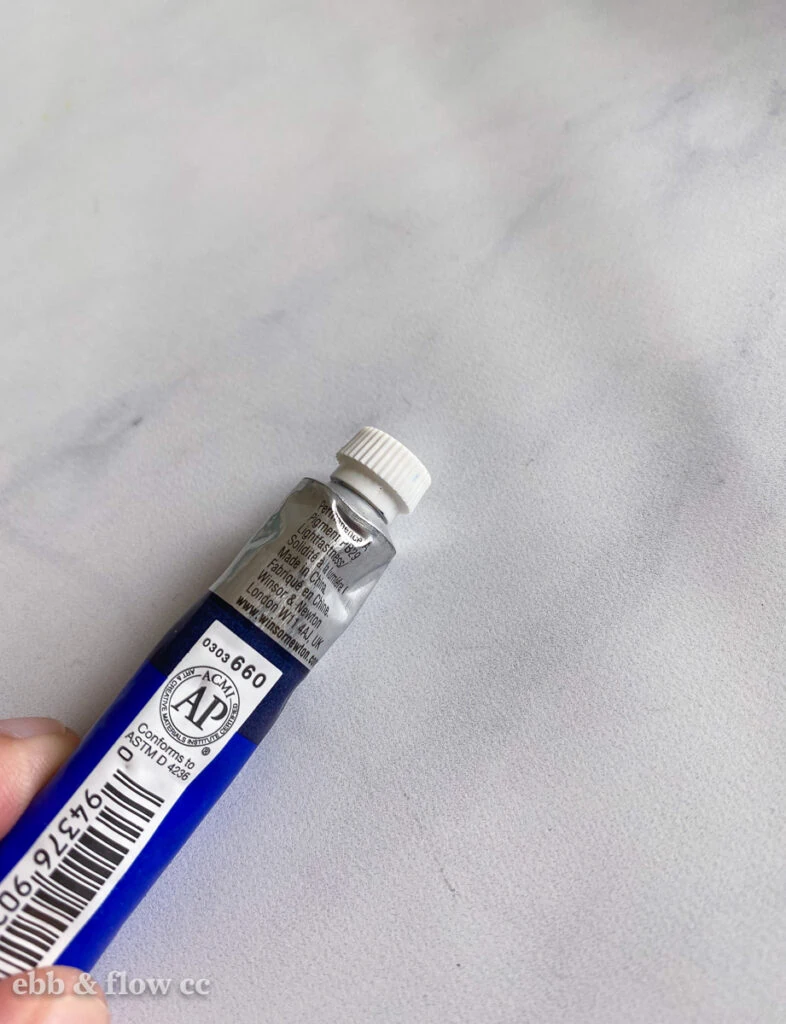
Most of this information can be used for watercolor, acrylics, and gouache. (It probably works for oil paint too. I just don’t paint with them.)
You might be interested in learning how to use watercolor tubes.
Color Name
Color names can vary amongst brands, even if they are the same colors. For the most part, there are some standard color names though such as phthalo green, ultramarine blue, and cadmium red for example.
Not all colors are available in all mediums. For instance, indigo is popular in watercolor paint and doesn’t seem to exist in acrylic paint.
Colors can vary by brand. For instance, Sap Green is always a warm green, but there are huge differences in the colors.

Some brands have specialty lines that are also denoted in the brand names or labels.
For instance, Daniel Smith has the Primatek line, which is allegedly made with minerals. (There’s a whole controversy about this that I don’t want to get into.)
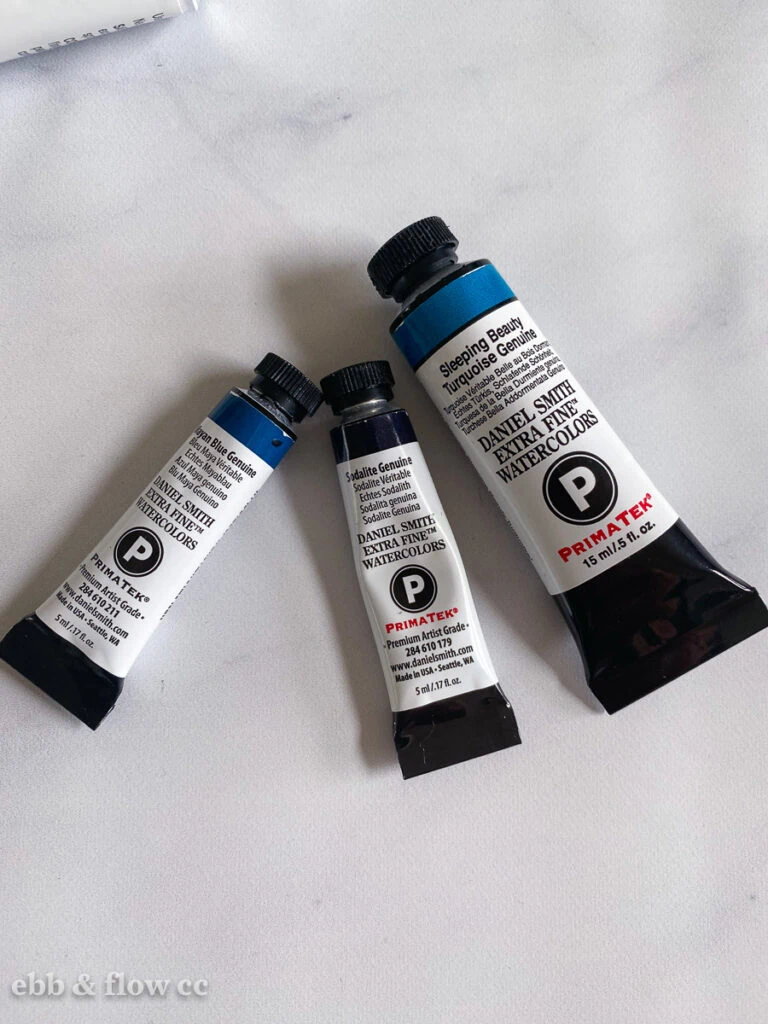
Series
This mostly refers to the price of the paint. Since some pigments are more expensive to produce, they cost more. This is why the same size tube of paint can vary in price.
Series 1 paints are more affordable than series 3 or 4 paints.
Color Pigments
Paints are made from pigments. These pigments are indicated with 2-3 letters and a number.
- PR – Red
- PO – Orange
- PY – Yellow
- PG – Green
- PB – Blue
- PV – Violet
- PBk – Black
- PBr – Brown
- PW – White
- PM – Metallic
You probably don’t need to memorize every pigment number, but they’re good to know if you want to look up the properties of a particular pigment. Here’s a good source to learn from if you want to nerd out.
You can also use that number to learn what each color is made from.
Some paint colors are made from mixtures and may contain colors that aren’t lightfast.
Pigments can vary greatly from brand to brand. Some are even used to create multiple colors of paints!

Single pigment paints are lovely to work with because they’re the easiest to mix. You know what you’re working with, so there are no surprises.
Don’t discount pigments with multiple pigments though. Some of my favorite colors have more than one pigment but have almost magical properties. For example, Cascade Green by Daniel Smith separates into green and blue pigments.
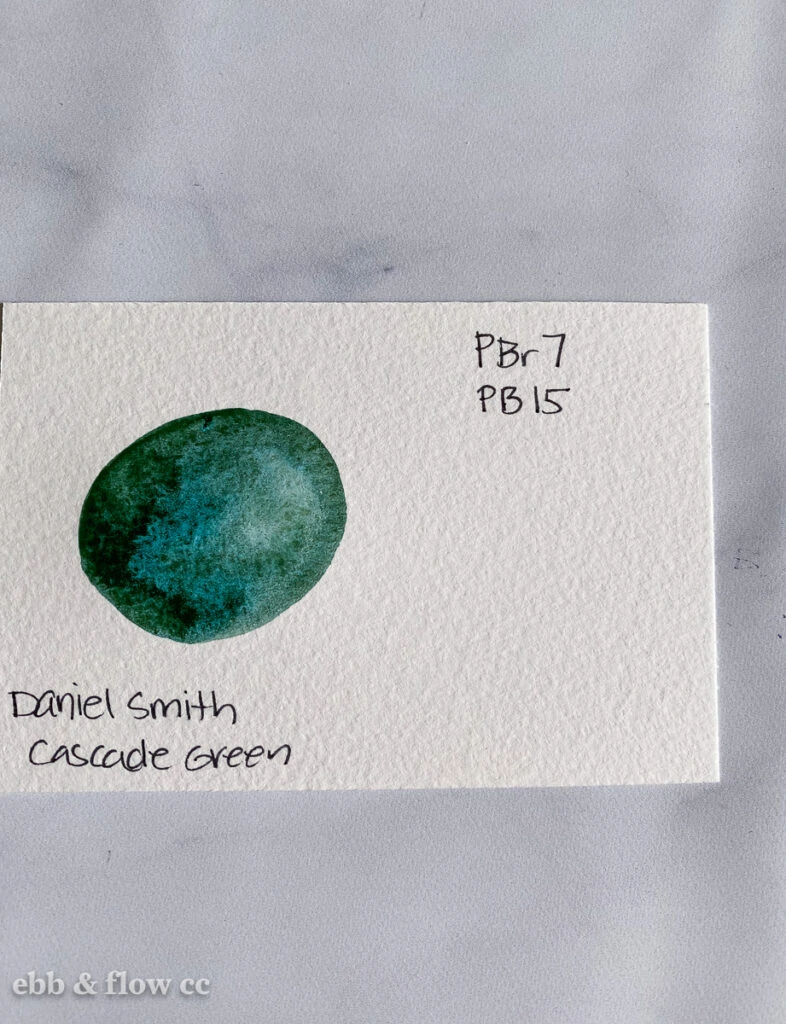
Lightfastness
Lightfastness refers to how well the paint withstands sunlight without fading. This is important if you plan on selling your work.
Fugitive colors will fade in the sunlight. Opera Pink is the most popular example of this.
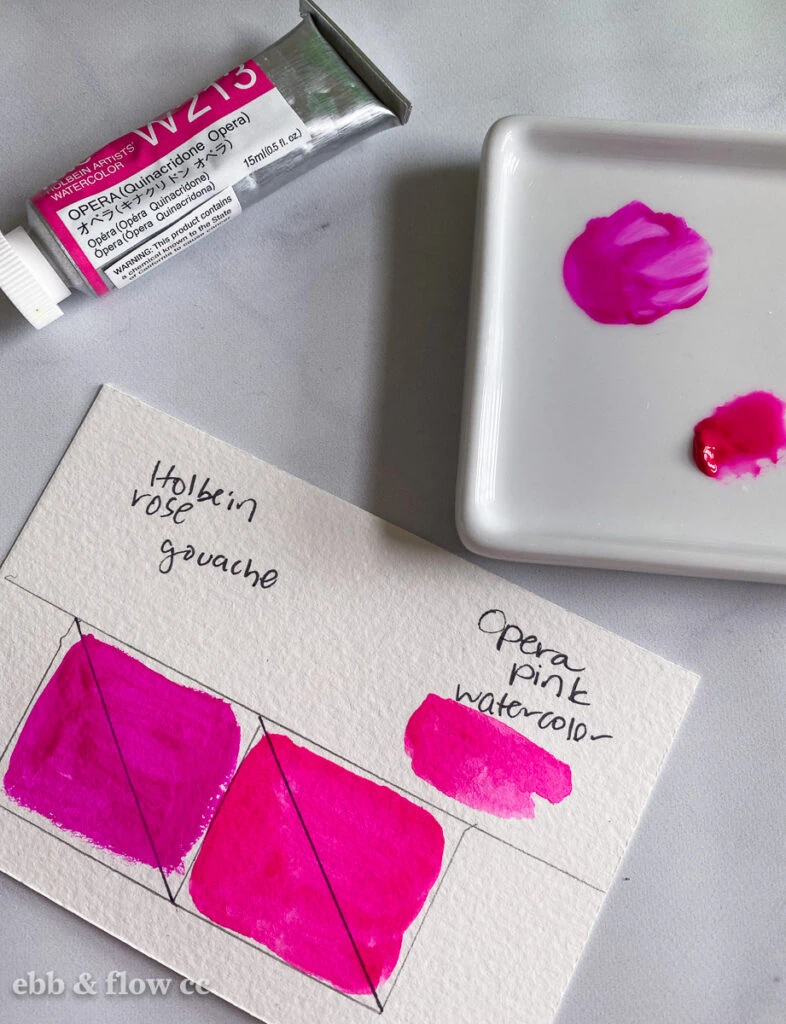
Other colors can change colors if exposed to sunlight.
Most paints use the ASTM rating scale which ranges from I to V, with I being the most lightfast.
Opacity
Opacity refers to how transparent the paint is.
It is denoted with either a circle or a square that is blank, filled in, or somewhere in the middle.
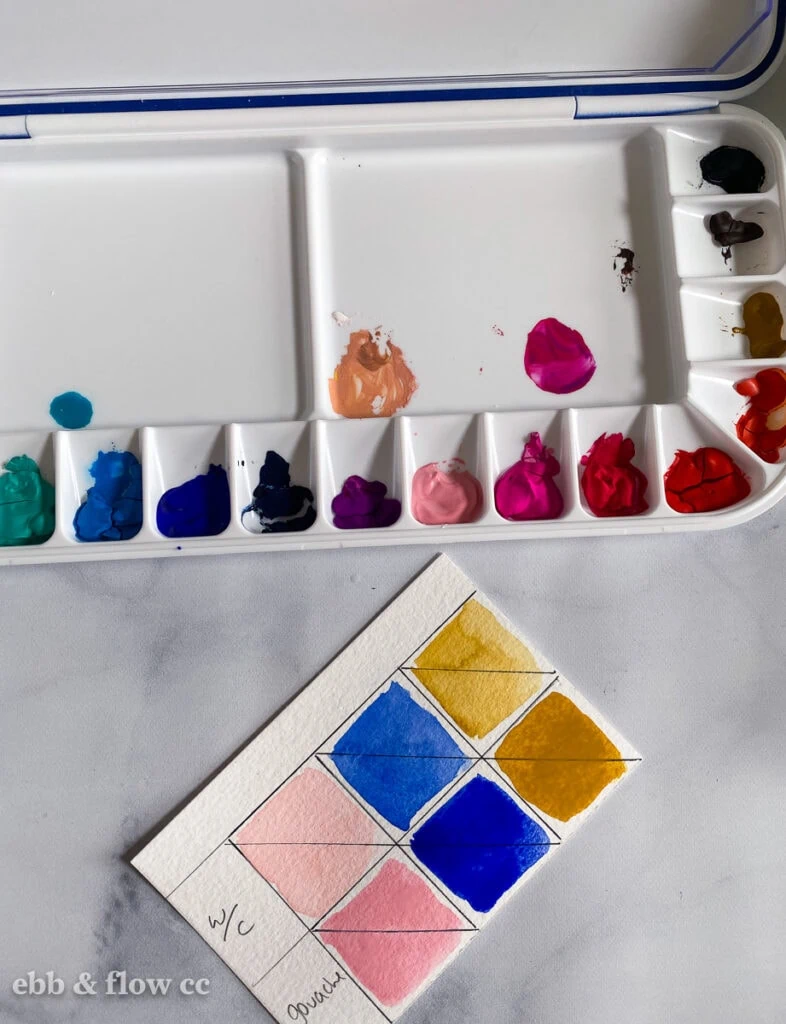
Ingredients or Binder Information
Paints tubes may also contain information on the binders or other ingredients. For watercolors, you may see gum arabic as the binder.
Staining or Non-Staining
Not all paint labels contain this information, so you might need to look this up on the manufacturer’s website before purchasing a new color.
This refers to whether or not a paint will stain or if it can be lifted. The scale ranges from 1 to 4 with 1 being the least staining and 4 being the most staining.
Paint with a high staining rating can be good for layering because the color won’t lift when you put down a new layer.
However, you might not be able to “erase” mistakes by lifting the paint with a damp brush.
Permanence
Gouache also has a permanence rating. The scale is from 1 to 4 with 4 being the most permanent.
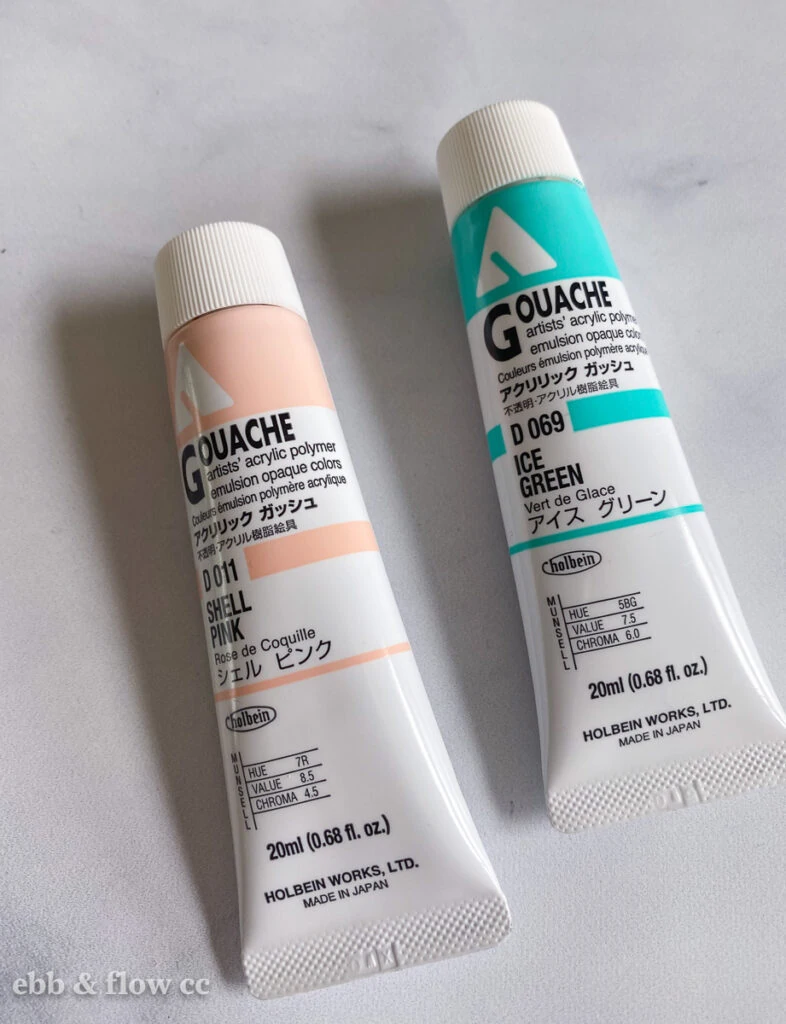
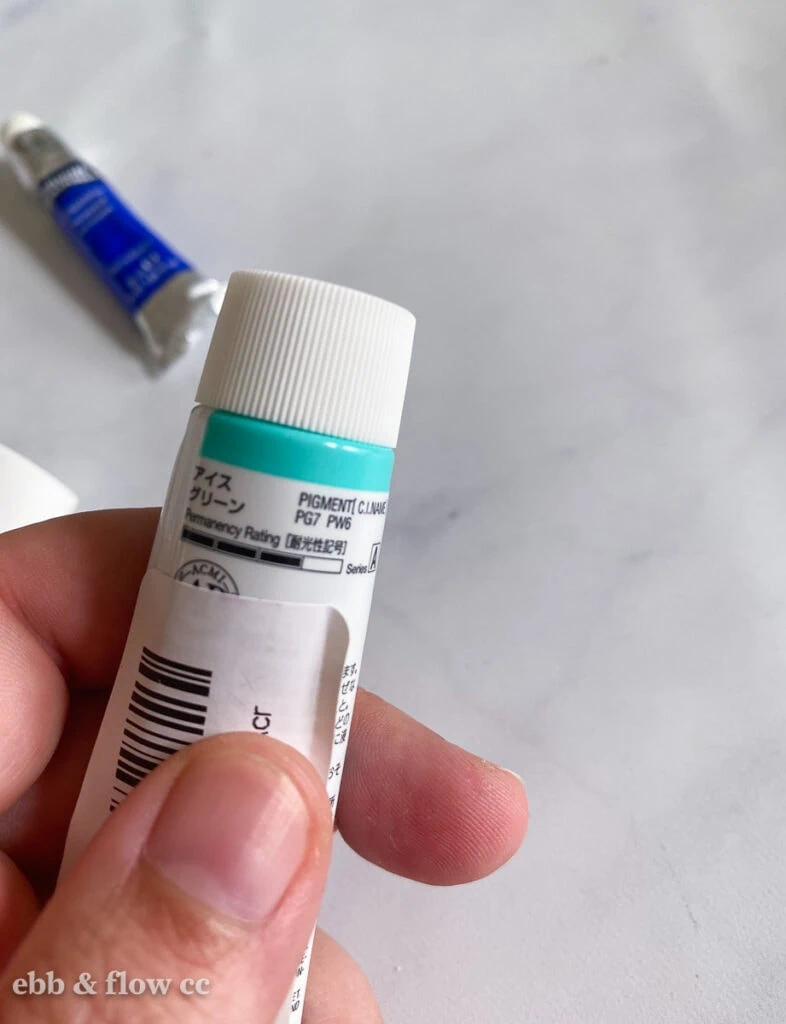
Tips for Buying New Paint Colors
Buying dot card sheets or color charts can be helpful when choosing new paint colors.
Dot cards allow you to sample the paint and see which colors you like without purchasing an entire tube.
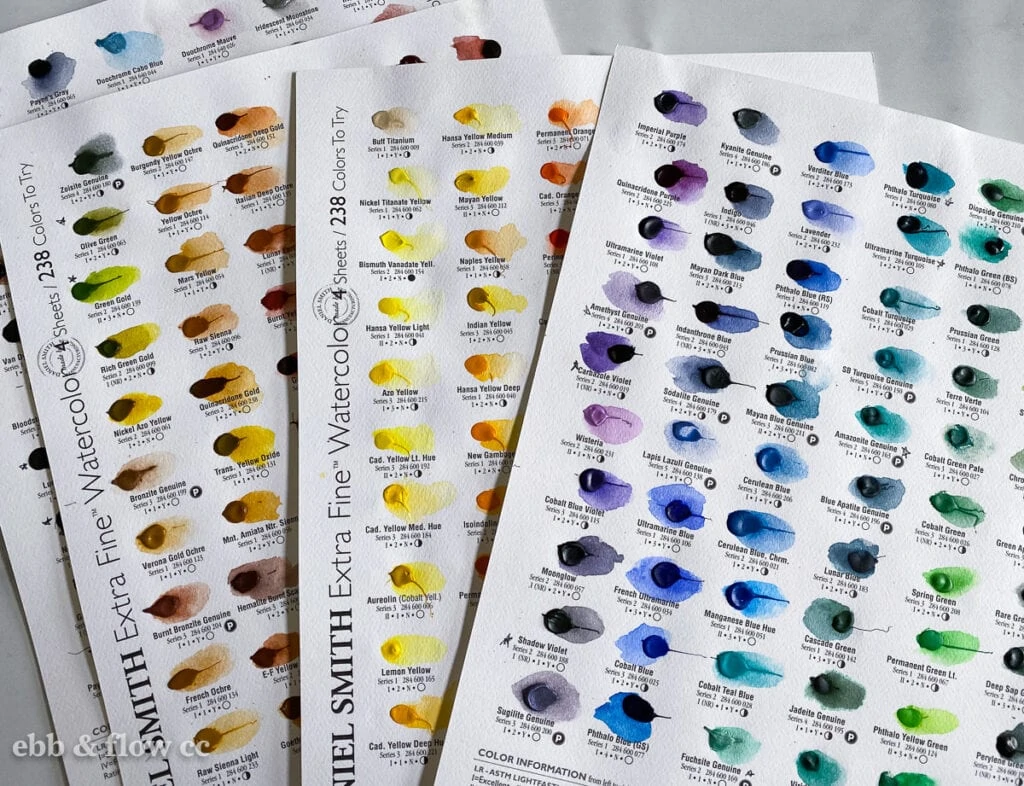
They also contain all of the relevant information about pigments, lightfastness, staining, and opacity.
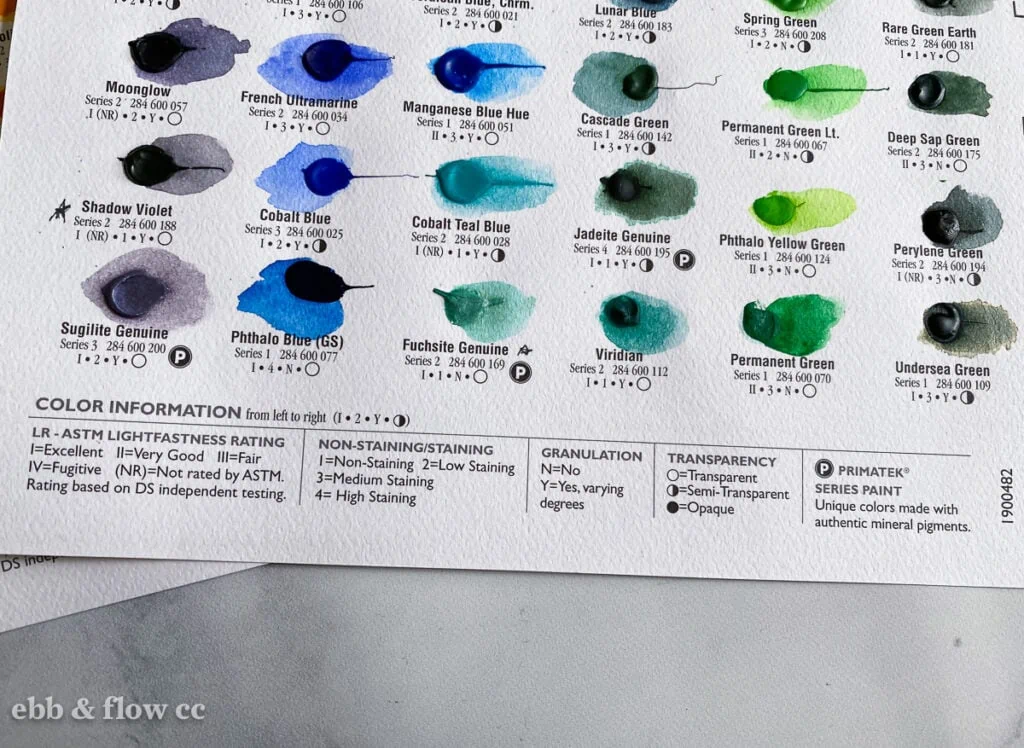
Color charts are nice to have for your favorite brands. The Golden acrylic chart uses real paint to show you what the actual color is.
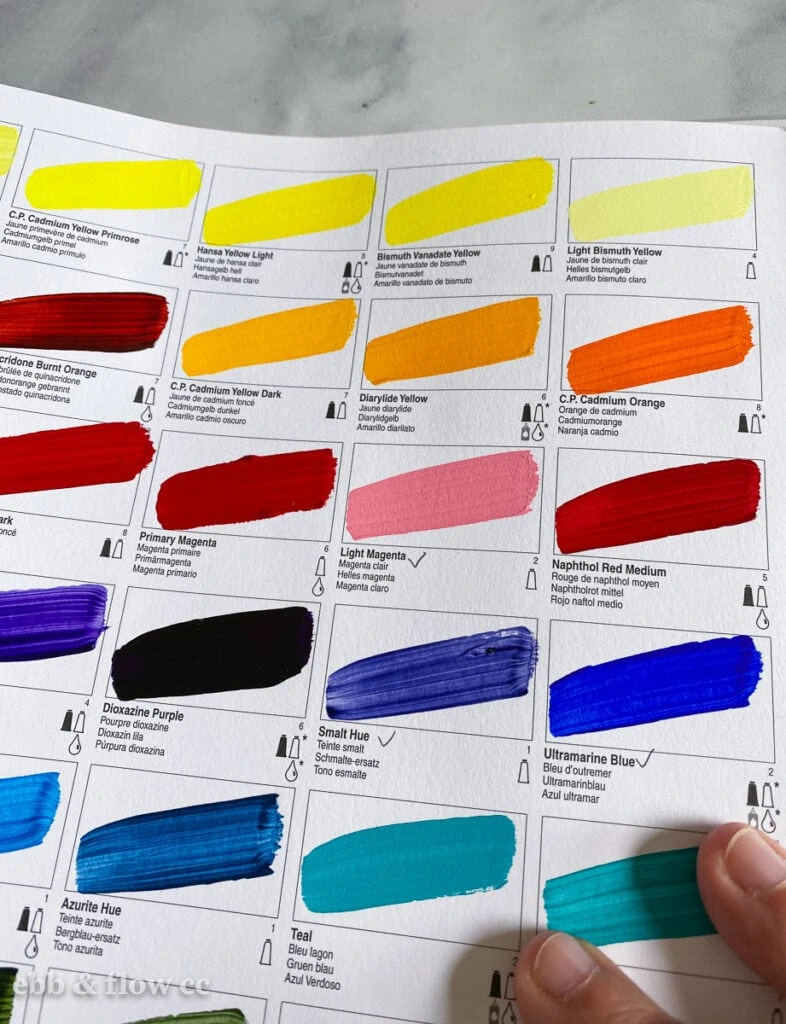
Some brands will give them to you or you can purchase them. The only place that I’ve seen to purchase them is Jackson’s Art, so it’s a good excuse to order from them. The color charts are really inexpensive.
I also like to keep a swatch book of all of my paints. This lets me see at a glance which color I might want to add to my collection. You can also write all of the relevant information if you want.
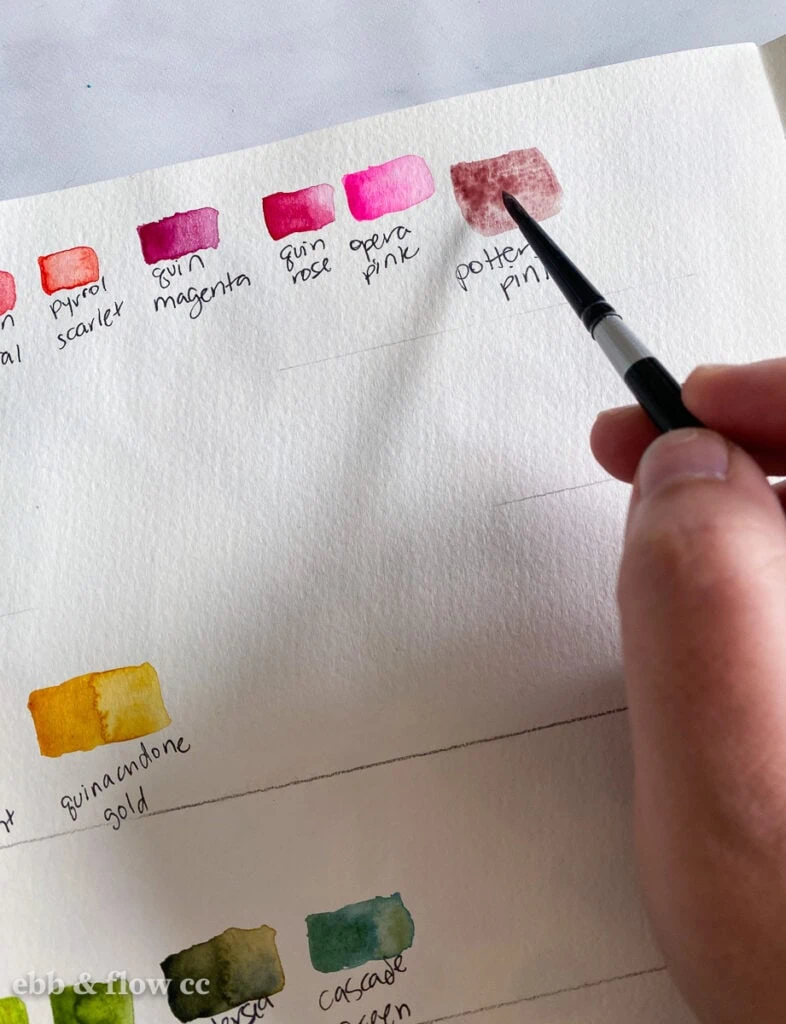
You Might Also Like:
Pin for Later!

